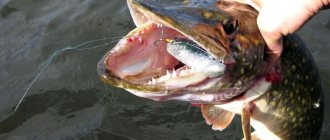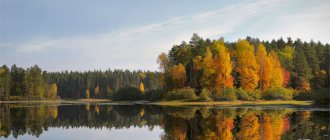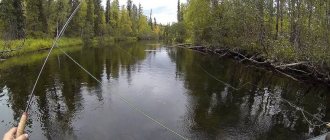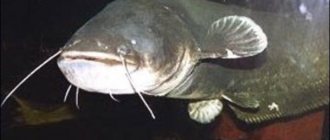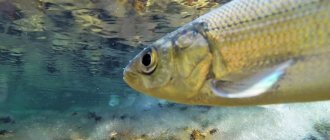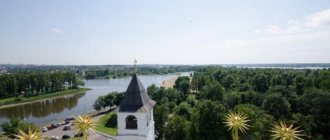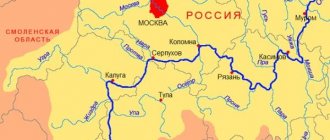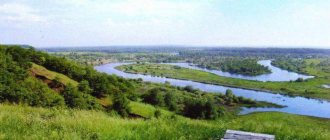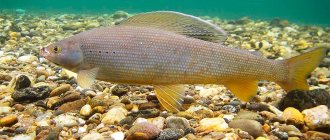Neman, Neman is a river in the Northwestern Federal District of the Russian Federation, in Lithuania and Belarus. In Russia, the river flows through the territory of the Kaliningrad region. The German name of the river is Memel. In Lithuania the river is called Nemunas, in Poland – Nieman. There are several possible origins of the name. Perhaps it comes from the Zhmud word “naminis”, which means “our (river), home”. In ancient times, the river was also called Rudon. The length of the river is 937 km, and the drainage area is 98,200 km2. The history of the lands where the river flows goes back several thousand years. All this had a great impact on the local landscapes, including the flow of the river itself. The modern borders of the states where the Neman flows were determined in 1991. The river basin belongs to the Baltic Sea, the main direction of the river flow is to the northwest.
The sources of the Neman are located in Belarus, not far from the capital of the republic - Minsk. There is some confusion and several versions regarding the definition of the beginning of the river. Traditionally, the beginning of the Neman is considered to be a small tributary - the Nemanets. But at present, the river is determined almost only after the confluence of three watercourses - Nemanets, Usa, Losha. Officially, the river begins 50 km from the capital, not far from several settlements, including the village of Verkhniy Neman, which is now a holiday village. But the sources of the river have changed greatly, and as a result of various reclamation activities, the place where the symbolic sign of the beginning of the Neman River stands has become, rather, simply a “tourist brand”. Currently, according to many researchers, it is more accurate to consider the Usa (Ussa) River as the source of the Neman. In any case, the main flow of the Neman begins after the confluence of the three above-mentioned tributaries. The river flows into the Baltic Sea, forming a vast delta and the Curonian Lagoon. The Neman is conventionally divided into three parts: the “upper course” ends at the mouth of the Kotra River (Grodno region), the “middle course” is considered to be the section to the Lithuanian city of Kaunas, and further, the lower part – to the Curonian Lagoon. The upper flow begins on the Minsk Upland, continuing its path along the Neman Lowland and then reaching the Middle Lithuanian and Primorsky (Lower Neman) lowlands. Along the entire length of the river, the territories adjacent to the shore were repeatedly subjected to various reclamation works. There are a large number of canals, ditches, etc.
From its very sources, the river flows through flat terrain, forming numerous turns in a wide floodplain. Crossing, so-called In the Stolbtsovskaya lowland, the river moves through a narrow valley densely overgrown with forests. The coastline here is distinguished by superb views. It is worth noting that the main forms of relief of the river floodplain, like most adjacent territories, were formed in the post-glacial period. In this regard, the river bed and coastal zone are formed by various glacial deposits. This also applies to numerous moraine hillocks. For example, closer to the border with Lithuania, the river crosses the Grodno Upland or the Baltic moraine ridge, where the river valley noticeably narrows, resembling a mountain canyon. Receiving a large number of different tributaries, the river becomes increasingly full-flowing, meandering to form bends, oxbow lakes, channels and numerous islands. On the Neman there are small rapids formed by accumulations of large boulders and other coarse material. In the upper reaches, the prevailing width of the river is 35-45 m. The bottom, as a rule, is composed of pebble deposits. The depth of the river is, on average, 1.5-2 m. In the Grodno region, already near the village of Nikolaevo, the Neman increases significantly, here the width of the watercourse can be more than 75 m. A large number of hydraulic structures have been built on the river, for example, a canal connecting the Pripyat River, currently inactive. And also the Augustow Canal, connecting to the Vistula. The dams of the Grodno and Kaunas hydroelectric power stations are located in the river bed. The main current is dominated by sandy, somewhat elevated banks covered with forests. There is a certain asymmetry of the banks - one bank is always higher than the other. Mixed forests predominate, largely consisting of coniferous trees. Wetlands are most often located in the floodplain zone of tributaries. The bottom is predominantly sandy, sometimes with accumulations of coarse material. Above the city of Grodno, the depth of the river can reach 18-20 m. In the Grodno reservoir, the width of the watercourse in the area of the river mouth. Svisloch – up to 2 km. In the middle reaches, the width of the river reaches 150-200 m. The navigable part of the Neman reaches the mouth of the Berezina, and higher in high water. In the lower reaches, the width of the river can reach 350-400 m, and in some places more than 600 m. Bypassing the Kaunas reservoir, where the Neman valley expands to 20 km, the river flows through the Lower Neman lowland, while the flow is regulated by a hydroelectric dam. The river delta is located on the territory of the Kaliningrad region and Lithuania, and is a unique natural complex. Swamp landscapes with hillocks in the form of dunes predominate. Significant spaces are covered with mixed forests of alder, birch, spruce, and pine, interspersed with meadow and swamp vegetation. The delta is under protected status both in Russian territories and in Lithuania. At the mouth, the river splits into several branches, the main of which are Gilia (Matrosovka) and Rus (Rusne). The right watercourse Rus is also divided into the Skirvite and Atmata channels. The state border between the Russian Federation and the Republic of Lithuania runs along the Rusne branch (on Russian maps - the Severnaya River). In the estuarine zone, the river depth reaches 5-6 m.
The Neman River belongs to the Eastern European type with mixed nutrition. The river is located in a zone of temperate continental and marine climate. Maximum precipitation occurs in July-August. Snow feeding accounts for about 40% of the average annual runoff. Ice phenomena on the river occur in the second half of December, and ice melts at the end of March. But situations are not exceptional when an autopsy occurs in February, or vice versa, in April. During the freeze-up period, autumn ice drifts are not uncommon. At the mouth of the river, surge phenomena play a great influence on the hydrological regime.
Ichthyology
It is important to note that as a result of peat development, as well as intensive reclamation work, the hydrological regime of the river, including the upper reaches, has changed quite significantly, which has affected the qualitative and species composition of the ichthyofauna. Currently, there are 33 species of fish in the river. Both sedentary, semi-anadromous and anadromous breeds live here. It is worth mentioning such as: loach, chub, silver bream, char, European smelt, dace, asp, silver crucian carp, rudd, brown trout, bream, Atlantic salmon, burbot, perch, roach, podust, catfish, pike perch, raw fish, sticklebacks, pike , bleak, barbel, saberfish, ide and others. Lamprey is found in single specimens. It is important to note that there may be fishing restrictions in some sections of the river. For example, at the Grodno reservoir, at the moment (until July 1, 2018), there is a ban on fishing from the dam and 1 km downstream. In addition, there are strict controls on the fishing of certain types of fish. Before visiting the river, be sure to familiarize yourself with the rules of recreational fishing in the region. This is especially true for fishing in Lithuania and Belarus.
Where you can’t fish on the Neman in the vicinity of Grodno and what to do if you see poachers
- 11406
- 22 March 2021, 07:03
- fishinglawanimalsregion
Photo: vgr.by
The Grodno Regional Inspectorate for the Protection of Fauna and Plants reports that a fishing ban begins on April 1, which will last until May 30, writes “Evening Grodno”.
Why does environmental protection introduce a ban at all?
Every day the water warms up by one or two degrees, which serves as another signal of “readiness” for this or that fish. Following the pike, dace, ide and asp spawn, followed by perch and ruff.
The most widespread spawning is observed from the second half of April among roach and bream, in May pike perch, barbel, silver bream, crucian carp go to spawn, and the most heat-loving ones - tench and rudd - begin to spawn in late May - June.
At this time, fish gather in groups, schools, sometimes quite large, approaching the shores, shallow waters, river inlets and lake bays with dense thickets of aquatic plants. At the moment of spawning, he loses all caution.
In order to preserve fish resources and create favorable conditions for spring spawning, fishing of all types of fish in the Grodno region is prohibited from April 1 to May 30.
Who can catch
During this period, people are allowed to fish with one fishing rod with one hook or one spinning rod equipped with artificial bait, with one single, double or triple hook during daylight hours from the shore (without going into the water) or from ice, from artificial structures.
Where recreational fishing is prohibited
The Ministry of Natural Resources and Environmental Protection has established a seasonal ban on recreational fishing. Thus, from April 1 to May 30, recreational fishing will be prohibited:
in the Grodno district of the Grodno region:
- Augustovsky Canal - from the lock near the village of Nemnovo to the place of its confluence with the Neman River;
— floodplain reservoirs of the Neman River:
- Kelbasskaya inlet near the village of Kelbaski;
- Berezhanskaya inlet near the village of Berezhany;
- on the section of the Neman River from the dam of the Grodno hydroelectric power station to the water intake ladle of the bucket-type water intake of the open joint-stock company "Grodno Azot" near the village of Pogorany, Grodno region.
Inflow on the Neman in the Berezhan area in the Mostovsky district of the Grodno region floodplain reservoirs of the Neman River:
- Lake Old Neman-1 near the village of Hartitsa;
- Lake Vinoboyskoe and Lake Novoe near the village of Novinka;
- an unnamed backwater near the village of Dubno.
Reservoir bans
Recreational fishing is prohibited in certain fishing grounds from March 1 to May 30, as well as from October 1 to December 31 in the Grodno district of the Grodno region :
Neman River - for 50 meters up and down the river from the point where water enters the opening of the culvert - a tubular crossing located in the village of Mikhailovka;
Grodno Reservoir - within a radius of 50 meters from the point where water exits the culvert - crossing tubular base 9 , located near the village of Mikhailovka.
In the Mostovsky district of the Grodno region :
Grodno Reservoir - within a radius of 50 meters from the point where water enters the opening of the culvert - a tubular crossing located near the village of Glyadovichi;
Neman River - for 50 meters up and down the river from the point where water exits the culvert - a tubular crossing, base 15, located near the village of Glyadovichi.
Where to report poachers
If fishermen see that poachers are operating before their eyes or know about impending violations of environmental legislation, they can report this by calling +375-33-364-33-36 or send recorded photos or videos of the violation on Viber to the same number.
Fishing Features
It is difficult to determine the significance of the Neman River for the entire region. First of all, it is the most important transport route. It is difficult to describe the number of historical and cultural places on the river itself and in its surroundings. The tourist possibilities of the river are inexhaustible, which is supported by a huge number of different bases, sanatoriums, guest houses and private farmsteads with hospitable hosts. Probably most fishermen, not only in the region, but also in the main part of Russia, have heard about the Curonian Lagoon. Fishing in the main riverbed is no less interesting. Also, don’t forget about your favorite hobby when traveling near the banks of a river in Lithuania or Belarus. For example, in Lithuania, on the Neman and its main tributaries, fishing for Baltic (Atlantic) salmon is very attractive. In recent years, Lithuanian fishermen can no longer be surprised by catching trophies over 20 kg. On the territory of Belarus, fishing on the Neman is also very interesting. One has only to look at the list of species diversity. In general, it is worth saying that the conditions of the river and the types of fish allow almost all types of freshwater fishing to be used. Don't forget about winter fishing. In most cases, on your first trip to the Neman, we strongly recommend using the services of local recreation and fishing organizers. This will save you from unnecessary hassle when you are on an unfamiliar body of water. In the case of winter fishing or in the vastness of the bay, this may also be related to safety. When fishing independently in Belarus, and especially in Lithuania, there may be problems with fishing permits and environmental legislation.
Fishing on the Neman in autumn
In recent years, rafting fishing along the Neman has become increasingly popular. Firstly, this fishing strategy is, of course, working - a wide variety of fish are caught and caught well. Secondly, rafting allows you to truly be alone on the river and practically not pay any attention to the dominance of coastal fishermen.
For the most part, day rafting is practiced, with a variety of approaches based on the fact that there are more than enough access points on the middle Neman. Often two cars are used, one is left at the extreme point of the route, and the second is sent to the starting point.
The sandy texture of the Neman bottom allows you to rise to the starting point with almost no danger on motors, especially those that are capable of putting the boat into planing mode. A speed of about 20 km/h ensures covering a decent distance in a very short period of time. They often climb 30 kilometers or more, which is quite enough to completely unwind your soul.
Lida spinners usually choose bridgeheads above the village of Berezovka for rafting; they walk no less often in the area of the villages of Zblany, Ponemontsy, Peskovtsy and Orlyaya, located on the right bank. The choice by distance, as they say, is for every taste and preference. If they manage to reach Orly in a day, then they have time, if not, then they don’t. The goal is not distance, but fishing. Although diversity for the sake of preference changes dramatically. In fact, during a short autumn day, about ten kilometers of the river are fished calmly and monotonously. The question of distance often depends on the intensity of the bite. Usually you come to a point you like, work it, if there are no bites, then you quickly weigh anchor. But if there is an unrealized bite, then you begin to fish the area all the way. And it happens that almost every promising place is blessed with bites, if not fish, which significantly slows down the speed of the rafting. But the beauty is that on the middle Neman you don’t pay any attention to it at all. The presence of many entrances and fellow fishermen allows you not to worry too much about where you have to leave the route. Usually you go rafting together, and finding a ride to get to your car is not difficult.
By the way, the Neman River is famous for its rather fast flow and almost no one fishes without an anchor.
In September there are still a lot of breams on the banks of the river, but with the arrival of the first frosts and cold nights, when the bream bite weakens, most places become empty, which significantly expands the possibilities of spinning. But rafting is interesting precisely because even in summer you can find many promising spots that are free from bottom fish, floaters, and even spinning boaters. And it’s so important when you can find a place and time on the river when it’s just you and your gear.
Personally, when rafting, I aim more at pike, which, compared to other predators, is caught more or less consistently. At the same time, intrigue is always present, albeit infrequently, but the same wobblers catch pike perch, and even more often asp are included in the bycatch, responding right up to the deepest autumn. If you fish with a spinner, you may get a bite from the ide. Although on the wobbler theme the main fish are pike, perch and chub.
Classically, visible drops of depth are fished, which pike simply adores. No less interesting are local rubble, logs, and washed away trees. Among the visible landmarks, the boundaries of calm water with rapids and changes in the direction of currents stand out. Bushes hanging over the water are processed especially carefully, if only because they are inaccessible to competitors of boatmen.
Speaking about the direction of casting, some prefer to fish parallel to the shore, others cast into the shore, and still others anchor near the shore, luring the fish “to the shore.” Who likes what. But the closer you get to the water’s edge, the more often you come across small grass pike, whether on a lake or on a river, it’s a grass pike. But we are talking about autumn, and at this time of year you don’t want to focus on small, eternally hungry “pencils”. Fortunately, in the fall there is no need, as in the summer, to become attached to the dawns; pike are caught fairly evenly throughout the day. The bite can also be seen on a hot afternoon in Indian summer. Despite all sorts of global warming and low water levels, no one has canceled the autumn pike feast.
Of the baits, I mainly give preference to fairly large (90-150 mm) twitching wobblers, the effectiveness of which increases significantly compared to summer. It seems that the “big chunk” theory inherent in the winter fattening period works. This does not require any expanded range of baits; usually 5-10 different wobblers are more than enough. I think that on the autumn Neman, only spinners can compete with wobblers. It is extremely important that river twitching has shown itself well in “catching” pike in places that have already been traversed. It’s like with mushrooms - they won’t take everything, there will be more left than they took, if you look carefully, as for fishing - catch them thoroughly. I use wobblers with a depth of 1.2-2 m and shallow ones with minimal depth. The wiring is normal for twitching, I just take into account that specific models operate differently on the river. There are wobblers that can be thrown even in a circle - they work interestingly with the flow, against, and across the flow. There are more specialized ones that show good results only when moving along a certain trajectory in relation to the current, while in other directions they literally “turn off”. Taking into account such nuances, I select a bait for a specific point, although the final verdict is made by the pike.
And yet, in the general tactics of catching autumn pike on the Neman, a certain stratification is visible, one might say, in a 50x50 proportion. Some fishermen only jig in holes, others work along the shore edges and even along coastal vegetation. This is due to the autumn confusion in the behavior of pike. Either it is active only at depths, or even large specimens stay close to overgrown shallow water. Perhaps this specificity of the relatively shallow and fast Neman is difficult to say definitely, but the fact remains a fact.
As for local walleye, they are unpredictable in late fall. There is simply nothing to attach to in the search; it is very difficult to calculate the wintering places of the fanged one, especially within the borders of the Lida region.
Last October brought a big surprise, of the “mad bite in the worst place” category. We decided to go rafting along the same route we went in the summer. There are plenty of good places there, but there is no long section at all - a knee-deep sandbank, only small holes under the banks. In the summer, we generally walked here without casting a spinning rod - it was so shallow that we had to get out of the boat. In October, the water rose 20 centimeters, and warmed up well under the October sun. At least, the surface layer was 3 degrees warmer than in the area of the pits and shady places, which was felt well even with the palm of your hand in the water. It is not surprising that clouds of fry of a wide variety of fish species poured into the shallows. Well, further along the food chain events developed predictably: large fish came out of their ambushes for such a feast.
At first my partner and I didn’t know this, moreover, we didn’t even imagine it. Just following the rafting, we decided to make a few casts towards the shore in shallow water. Almost immediately a dark silhouette jumped out behind the wobbler, chased the bait for about two meters, then instantly swallowed the entire small three-piece. The ide clearly weighs more than a kilogram! Such an effective bite became a powerful clue that allowed us to pay close attention to shallow water. There were a lot of ides here - one at a time, in pairs or threes they stayed off the coast in mini-pits, troughs, wherever it was at least a little deeper than in the main water area. Of course, it was possible to thoroughly “mow down” this ulcerous herd by mooring a boat and wading the water area widely into a wade. In principle, there was no need to get out of the boat. But I wanted not to destroy, but, taking several tails, to contemplate and admire this beauty, to rejoice at the high density of fish in this area. And we went downstream, and the fishing area stretched for about two kilometers. And the fish did not dry out. Moreover, at the end of the reach, where the shallows smoothly fell into the hole, at a depth of about one and a half meters there were even more fish. The sides of large asps turned silver, and we noticed a school of decent bream. The same ides were encountered everywhere, one was seen as a very large one - a sort of yellow “headlight”, but did not deign to bite. I think that this is not a migratory fish in late autumn migrations. All this is a local “authority” emerging from his ambush.
On the tributaries of the Neman
In autumn, rafting fishing along the tributaries of the Neman is no less, if not more, popular. Lida fishermen most often walk along Ditva from the bridge of the Grodno M6 highway. Moreover, at about seven o’clock in the morning the boat may already be on its seventh or eighth boat. The global difference between rafting along the Ditva and the Neman is, first of all, the size of the river itself. Even beavers are encroaching on the small Ditva, trying to completely block the river, fortunately so far the fishermen have been able to resist them, although sometimes it is necessary to attract services to help clear the riverbed.
There are also a lot of ordinary blockages on Ditva, and in some places such that a boat can barely squeeze through, while the width of the riverbed is around 5-7 meters, with extensions at the tops of the bends up to 15 meters. By and large, the water area is identical to a large river, but in a more compact, much easier to read design, which creates an incomparable aura of small rivers, giving fishing a more dynamic character. Requiring more accurate casting and quick response to the changing nature of the water area.
Why is rafting on a small river gaining popularity? Yes, because a good pike bites, no smaller than the Neman pike, but around 1-2.5 kg, there are “threes” and “fours”, although there are plenty of small toothy ones.
The sensations from rafting on Ditva and Neman are completely different. On the Neman you can travel significantly longer distances in the same period of time. On Ditva, a lot of time is spent passing difficult places, and the river often meanders.
Already with the first autumn cold snaps, pike stick to holes of 2-3 m, which are located, for the most part, on river bends. Usually the area of the hole is small, on average 10 by 10 meters, and I don’t swim into it, lowering the anchor not far from the entrance. I fish with wobblers, but if the depths reach 4-5 m, then I use a jig - in the fall, pike rarely fish high from the bottom. The time to fish the hole depends on the fishing mood. I’m in the mood to “hang out” here—I can linger for half an hour. From a practical point of view, it is beneficial to change places more often, regardless of whether there were bites here or not - there are a lot of holes along the river, and if you linger on each one for a long time, you won’t swim far.
During the period of autumn warming, pike like to leave the pits, scattering widely, being caught in the most unexpected places, at various depths, often even in coastal shallows up to a meter. In such conditions, the rafting speeds up somewhat in order to quickly locate the fish; fortunately, in the autumn warmth, the pike is active and quickly responds to bait that is in its field of vision. Although, if we talk about pikes from 2 kg, then on warm autumn days they still stick to the pits, only they can rise to the upper edges of the pit dumps.
Regardless of the location of the pikes, I work with short casts, usually 7-10 m, up to a maximum of 15. Of course, on a straight run you can throw a wobbler or jig much further, if you want to check a wide area with one retrieve. But usually it ends badly. Either I “catch” the cramp with the bait breaking off, or the wind will blow the bait onto a coastal bush, and it is not always possible to save it from captivity.
No matter how the fishing bite turns out, Ditva is especially good in the fall. There are much fewer people on the shores than in summer, you swim calmly, and you don’t bother anyone, and no one bothers you. Particularly frost-resistant fishermen raft until the frosts, when snow has already fallen, the air temperature is about zero, and the predator is biting. Fortunately, the Ditva is one of those small rivers from which pike do not roll into their mother rivers in winter. On the contrary, Neman pike can come here in the fall - long, light, tasty. And from the flooded peat bogs along the ditches into Ditva, the swamp toothy one likes to come - plump, dark, with worse culinary properties, but angry, boldly pecking, quick on gear, catching which is a pleasure!
